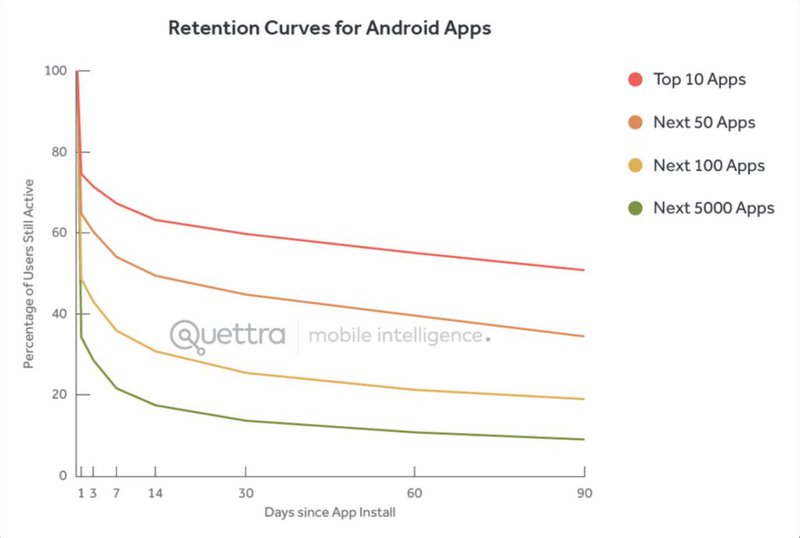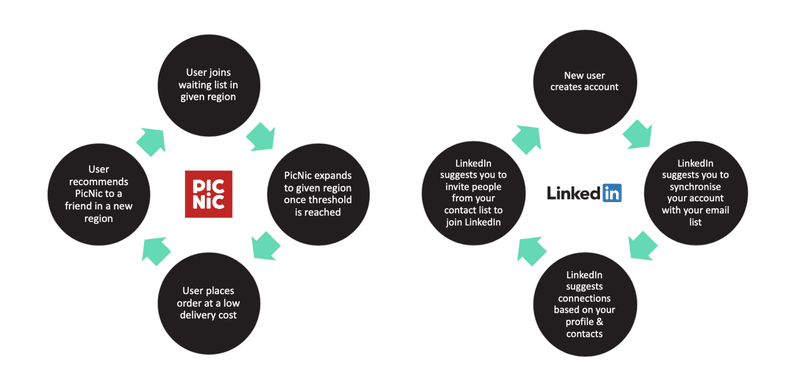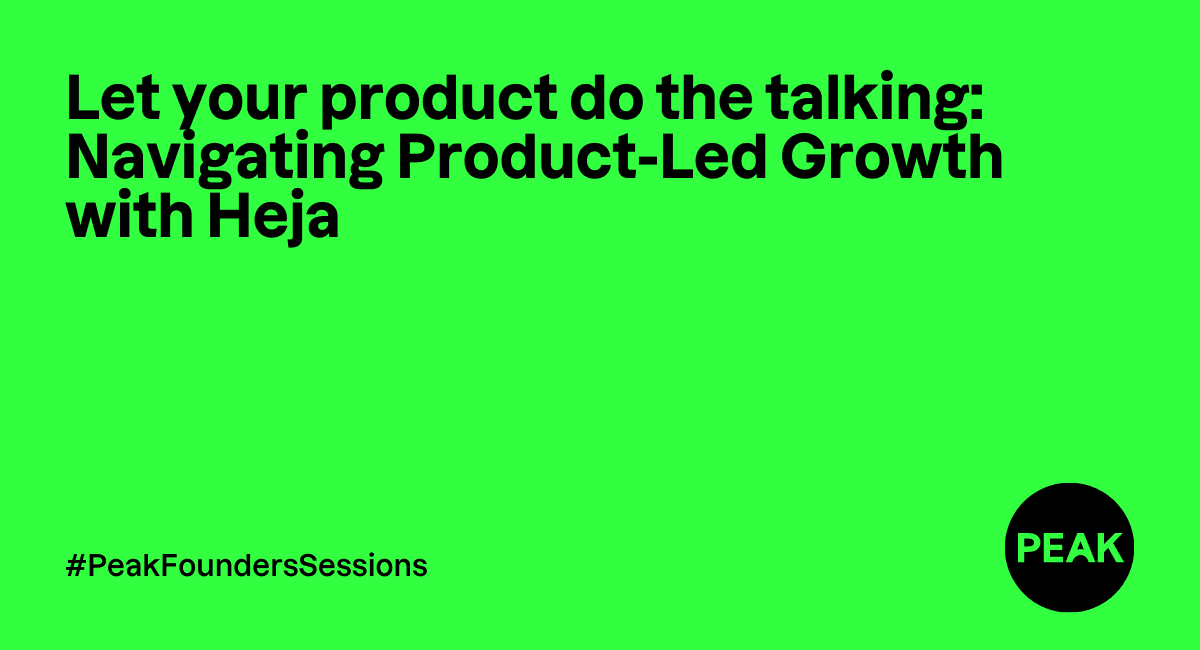At Peak, we strongly believe in the notion of “founders supporting founders”. That’s why we organise Founders’ Sessions, in which our portfolio companies share learnings on topics like growth, hiring, etc. This time Emil and Andreas from Heja took the stage and shared their insights on Product-Led Growth (PLG). This strategy has enabled them to almost exclusively rely on organic reach!
Heja in a nutshell: Heja is a sports team management and communications app targeting the 1.5 billion people active globally in youth sports. Their app enables coaches, players, families, and friends to connect and swiftly organise and schedule activities with ease.
The fundamentals of Product-Led Growth
As the name suggests, PLG is a strategy where the primary driver for user acquisition and expansion is the product itself. Said drivers can vary from having some unique features to simply performing much better than existing products.
A few examples of successful PLG strategies:
- 💸 Venmo (or Tikkie for our Dutch readers) gained users by drastically simplifying P2P payments. The improved UX from making wire transfers virtually frictionless was a leading factor for their early growth
- 👻 Snap initially gained most of its users through the novelty of disappearing posts. It forced people to download their app in order to see the content
- 💬 Slack initially gained much of its users by turning early adopters into spokespeople. Their high-quality freemium product was orders of magnitude better than the incumbent communication method (email)
- 🎬 Netflix gained a substantial amount of its users by pioneering the data-driven recommendation engine. This technology enabled them to give a personalised experience at scale
This, of course, isn’t to say that paid reach is bad. On the contrary, we believe paid and organic reach are there to complement each other.
Take Heja as an example: they’re targeting the 1.5B people active in youth sports. Paying to reach such a large audience would be way too expensive (and it isn’t 2021 anymore, so burn actually means something again!). On the other hand, solely relying on organic reach would take ages. Hence, Heja combines the two by targeting their paid efforts to a very specific user group (coaches), who in turn serve as catalysts for organic growth as they invite the rest of their teams onto the app.
Product-Led Growth as a strategy for improved retention and engagement
Retention is what separates the best from the rest. High retention, and engagement, indicates customer love, which is an early sign of product-market fit. This also lays the foundation for a myriad of other opportunities:
- 💰 Increase your top-line → higher retention means higher engagement, which implies higher willingness to pay, thus improving the odds to convert and upsell users
- 📈 Go viral → as more people come back to use your product, the more occasions they have to share it with others
- 💪 Grow sustainably → higher retention means lower churn, and the bigger the gap between churn and number of new users, the healthier the growth

Retention curves show the % of users that keep using the product over time. This is always a downward trend since users eventually churn. The graph above clearly shows that there’s a strong positive correlation between user retention and success. The top performing apps have significantly higher retention rates than worse-performing ones.
So what do we mean by “retention”?
Each company tracks something different when it comes to retention, but in essence they can all be broken down into 3 main factors:
- Firstly, determine the frequency – i.e., how often is the core activity performed? E.g., for a messaging app like Slack, usage is likely daily, while a medical app like Doctolib is likely used far less frequently
- Then, you must identify what core habit you want to instil within your users – i.e., what activity brings out your core value prop? E.g., for a content platform like Netlfix this would be viewing their content
- Lastly, you need to determine your ideal customer profile (ICP) – i.e., who is your target user? E.g., for a luxury service like NetJets this would be affluent travellers
Putting this framework into practice, here are some examples of custom retention metrics:
- Pinterest = daily active pinners
- Uber = weekly active riders
- Heja = weekly communicating teams
Maximising retention by instilling habits
High retention is the outcome of a myriad of factors falling in place. This includes having an intuitive, reliable product, smooth onboarding for new users, strong UX, etc.
One of the more powerful techniques to improve engagement is to zero in on creating habit loops inside your product.

The concept of the “habit loop” was first introduced by Charles Duhigg, an American journalist, in his 2014 book “The Power of Habit”. These loops are composed of 3 steps:
- cue → i.e., a trigger to make you feel something
- routine → i.e., an action to make you do something
- reward → i.e., the satisfaction your brain gets out of it
This is exactly why habits are so sticky and hard to break. Leveraging habit loops to stimulate user behaviour in your product can be extremely rewarding from an engagement perspective.
“When cue and a behavior and a reward become neurologically intertwined, what’s actually happening is a neural pathway is developing that links those three things together in our head.” – Charles Duhigg
Applying this thought process to Heja:
A coach needs to know their team’s attendance (cue) → they create an activity in the app (routine) → push notifications get sent out (cue) → players respond in the app (routine) → the coach is happy because they got aggregated feedback (reward)
Product-Led Growth as a strategy for improved user acquisition
Great products turn user satisfaction into fandom; the most powerful form of marketing will always be trusted recommendations (word of mouth).
Relatedly, there are 3 key forms of acquisition loops:
- Incentivised loops → e.g., Uber’s referral program
- Content loops → e.g., users sharing Quora’s content, leading to more users
- Virality loops → e.g., Zoom users bring in more users by hosting meetings
Below are a few examples of acquisition loops:

In Heja’s case, they have a virality loop: a new team is created → team members are invited onto the app → new users register and experience the product → they create new teams → etc.
Minimising friction at the initial trigger is so important. This is precisely why Heja lowered the barrier to creating new teams in their app by making the “create new team” feature more visible.
Figuring out what the right action points are for your product will likely take some trial and error. Hopefully this guide helps structure your thoughts.
TL;DR
- Product-Led Growth (PLG) is meant to complement and perhaps minimise your paid reach, not completely replace it
- User retention is one of the key metrics that separates the best from the rest. However, retention metrics can vary drastically, so identifying and tracking yours from the start is crucial
- Instilling habits is a challenging but extremely powerful way of locking in users and should thus always be considered in the development of new products or features
- PLG can serve as a tailwind to accelerate acquisition loops, which drives new user growth. Both product and marketing should aim to turn acquisition loops into flywheels
Thanks again to the Heja team for sharing their insights! We’re already looking forward to the next Peak Founders Sessions ❤️
